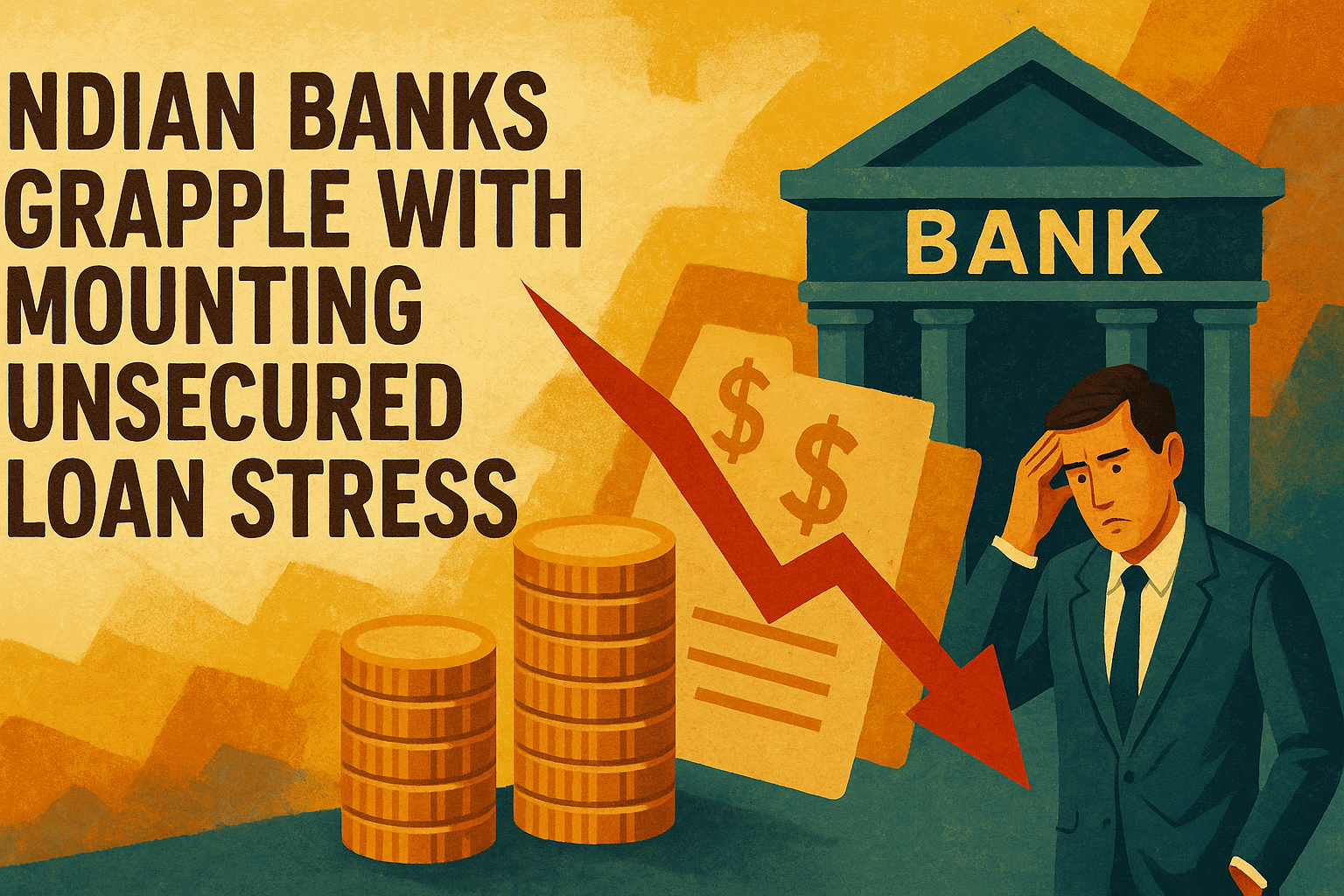Mounting Stress in the Unsecured Loan Landscape
India’s financial institutions have entered FY2025 under a cloud of rising stress in their unsecured loan portfolios. The first quarter (April–June) of the financial year saw several banks and non-banking financial companies (NBFCs) flag significant deterioration in asset quality, especially in segments once considered high-growth: microfinance, MSME credit, personal loans, and retail commercial vehicle loans.
Post-earnings analyst calls revealed a consistent theme — lenders are increasingly cautious about expanding their unsecured credit books due to elevated delinquencies. The ongoing cyclical pressures, such as increased farm loan slippages, added further to the provisioning burden, tightening the grip on profitability across the sector.
Key Stress Segments: MSMEs, Microfinance, and CV Loans
The emerging pain points in the unsecured loan space are most evident in:
- Microfinance and MSME Credit: Banks like IDFC First Bank, Kotak Mahindra Bank, and Bandhan Bank reported weakened bottom lines, primarily due to higher microfinance non-performing assets (NPAs). Meanwhile, Bajaj Finance, the country’s biggest consumer finance NBFC, noted first-time stress in its MSME and business banking portfolios.
- Retail Commercial Vehicles (CVs): Institutions like HDB Financial Services and Kotak Bank highlighted a surge in defaults in this space. Sluggish infrastructure activity, macroeconomic slowdown, and delayed payments from government entities were among the culprits.
- Personal Loans and Credit Cards: These traditionally high-margin segments also reported increased delinquencies, particularly among newer borrower cohorts with limited repayment history.
Provisioning and Credit Costs Soar
The cumulative impact of these stress pockets is a noticeable rise in provisioning and credit costs:
- Axis Bank made higher provisions owing to a change in loan classification methodology and a one-time settlement in its retail cash credit book. While management deemed this shift necessary to match industry standards, it significantly impacted the bank’s Q1 balance sheet.
- HDFC Bank and ICICI Bank indicated they are proactively building buffers to prepare for potential asset quality deterioration in the coming quarters. Both banks still describe their credit costs as “benign,” but caution that normalization is likely.
- Shriram Finance stood out with a rare positive—its credit cost declined from 2.4% to 1.9% sequentially. However, investor skepticism remains due to the lagged nature of its reporting.
Cautious Outlook and Slower Loan Growth
According to Anil Gupta, Senior VP at ICRA, the core challenge for lenders in the unsecured segment is the assessment of income, particularly for informal borrowers with volatile cash flows. With growing repayment strain, many borrowers are unable to refinance, exacerbating the stress.
Most lenders have already slowed down disbursements in risky segments. For instance, Bajaj Finance has scaled back its MSME and auto loan operations significantly after observing stress build-up starting February 2025. As Rajeev Jain, Vice Chairman, remarked: “Both these businesses will grow a lot more slowly in the current year.”
Hope on the Horizon: Stabilization Signals from Q3
Despite the current headwinds, some lenders are cautiously optimistic about stabilization in the second half of FY2025:
- Kotak Bank’s CEO, Ashok Vaswani, pointed out that microfinance loans have relatively short tenures (24–30 months), which allows for quicker portfolio churn and recovery as disbursements pick up again.
- Several banks believe that asset quality metrics could begin improving from Q3 (October–December 2025) onwards, contingent on improved macroeconomic activity and better rural liquidity.
Conclusion: A Tense Quarter, But Not Without Resilience
The first quarter of FY2025 has laid bare the vulnerabilities of India’s unsecured lending ecosystem. Rising defaults in once-promising segments, combined with cautious capital deployment and stricter credit norms, signal a strategic pivot for both banks and NBFCs.
While the next few quarters may remain bumpy, particularly for lenders with sizable unsecured books, prudent provisioning, tightening underwriting standards, and stabilization in disbursements offer a pathway to eventual recovery.
For borrowers, however, the squeeze on liquidity continues — a reality that could have broader implications for consumption, small businesses, and economic momentum in the near term.
Feel free to share your experiences and insights in the comments below. Let’s continue the conversation and grow together as a community of traders and analysts.
By sharing this experience and insights, I hope to contribute to the collective knowledge of our professional community, encouraging a culture of strategic thinking and informed decision-making.
As always, thorough research and risk management are crucial. The dynamic nature of financial markets demands vigilance, agility, and a deep understanding of the tools at your disposal. Here’s to profitable trading and navigating the election season with confidence!
Ready to stay ahead of market trends and make informed investment decisions? Follow our page for more insights and updates on the latest in the financial world!
For a free online stock market training by Yogeshwar Vashishtha (M.Tech IIT) this Saturday from 11 am – 1 pm, please sign up with https://pathfinderstrainings.in/training/freetrainings.aspx
Experience profits with my winning algo strategies – get a free one-month trial with ₹15 lakh capital! – https://terminal.algofinders.com/algo-terminal
Disclaimer
This article should not be interpreted as investment advice. For any investment decisions, consult a reputable financial advisor. The author and publisher are not responsible for any losses incurred by investors or traders based on the information provided.


